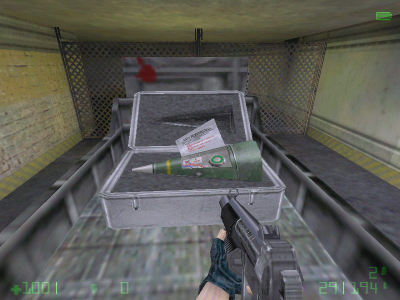The discussion of Interactive Surfaces offered here is in many ways a case of "if your only tool is a hammer, every problem resembles a nail". At the lowest level, one can discuss gameplay as a mere sequence of user inputs shaping a rectangular matrix of colored pixels over time. From the point of view of a coder implementing a collision system, most if not all player action can be presented as a ray cast against a spatial index of triangles. These low level concepts might not be very helpful in attempting to analyze design problems and invent solutions.
However, it is possible to discuss all player action as interaction with surfaces as long as all our objects are rigid bodies shielded by convex hulls, and all our interaction is mediated by point-and-click or collision. It does not really matter whether the surfaces the player acts on are part of a larger mesh, and how distinct they are from each other. If we used a set of particles or voxels instead, to let the player act on a volume instead, all issues of latency, granularity, bandwidth would still apply.
Understanding interaction with surfaces aids understanding gameplay in a more general sense. If active surfaces cycle through textures, unaffected by player action, then design elements like season, weather, tide, day-night cycle exhibit the same property. Reactive surfaces perform irreversible state changes triggered by player action. In a more general sense, a reactive design creates a world like a wind-up toy: the player will release the energy the designer stored in a spring, but nothing in the gameworld will reset the spring.
The distinction between interactive and reactive is an elusive one. Consider interaction is a tight, fine-grained, continuously operating feedback loop - every player action feeds into the simulation which immediately feeds back to player state. Reaction, on the other hand, is loose, discrete, and with no or delayed feedback to player state. Some amount of autonomous activity seems a necessary part of an interactive world: to some extent, state change has to happen even in the absence of player action or even presence. If the world has its own agenda, then player intervention is not only possible at all times, it is required.
The distinction between reactive and interactive structure might not be clear-cut, but no matter how hard it is to pinpoint the difference, you will recognize it every time you play it. One of the reasons FPS games have gone stale is that we keep adding and refining reactive elements while making virtually no progress on interactive elements. No matter how your game is designed, there will always be one interactive surface - the player's screen.

